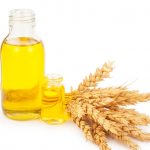
The Persian Silk Tree also known as Mimosa of Constantinople (Albizia julibrissin Durazz.is a beautiful name for a beautiful tree which is native to southwestern and eastern Asia (Iran to Japan). The tree is a member of the Leguminosae family.
It is now found throughout America (North and South) and makes for a wonderful garden tree. It is valued for its dark leaves, fern-like appearance, with fluffy, pink powder-puff flowers.
The Seed Oil Of The Persian Silk Tree
The seed oil is primarily included in skin lotions for producing beautiful, healthy, strengthened skin. The oil contains linoleic acid (59%), palmitic acid (14%) and oleic acid (10.5%). The oil contains plenty of different fats (triacylglycerols). The seed oil has a high enough level of polyunsaturated fatty acids to make it suitable as a nutritional substitute for other similar oils such as soybean oil (Nehdi, 2011).
Properties Of The Bark Of The Persian Silk Tree
The tree’s properties have been known for millennia. In traditional Chinese medicine, Persian Silk Tree extracts are known as 合歡花 (Hé Huān Huā). This is used to nourish the heart and calm the spirit in both Acupuncture and Chinese Medicine. The extracts are taken from the bark and flowers. There is a very effective paper which discusses the merits of a number of Albizia species which have all been used in Chinese medicine (Kokila et al., 2013).
The tree also has some remarkable chemical/biochemical properties attributed to it. These include the following:-
- antioxidant,
- anti-tumor
- anti-inflammatory properties.
The principal arena for extracts of the plant are to protect against aging and ‘fatigue’ of the skin caused by glycation. This is a biochemical process where collagen in the skin loses its elasticity and is associated with the aging processes. Sugars and small carbohydrate molecules are gradually bound to collagen which alters its structural integrity, making it less elastic.
It also encourages cells to produce melatonin which helps protect the skin from sun damage.
Components In The Persian Silk Tree
Three triterpenoid saponins called julibroside J29, julibroside J30, and julibroside J31 were isolated from the stem bark of A. julibrissin Durazz. (Leguminosae) using chromatogrpahy (Zheng et al., 2006). These compounds are claimed to have anti-tumour activity against certain cancer cell lines.
Clinical Studies
Mental health
Extracts of A. julibrissin possess antidepressant activity in mice especially when administered in relatively high doses. the biochemical mechanism is most likely mediated through the 5-HT1A receptors.
References
Kokila, K. A., Priyadharshini, S. D., & Sujatha, V. (2013). Phytopharmacological properties of Albizia species: a review. Int J Pharm Pharm Sci, 5(3), pp. 70-3
Nehdi, I. (2011). Characteristics, chemical composition and utilisation of Albizia julibrissin seed oil. Industrial Crops and Products, 33(1), pp. 30-34 (Article)
Zheng, L., Zheng, J., Zhao, Y., Wang, B., Wu, L., & Liang, H. (2006). Three anti-tumor saponins from Albizia julibrissin. Bioorganic & Medicinal Chemistry Letters, 16(10), pp. 2765-2768 (Article)


A nice short article about a tree I’m trying to grow. Would like to know more from you about its cultivation.